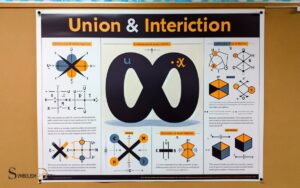Symbol of Sum in Math: Greek Letter Sigma!
The symbol of sum in mathematics is represented by the uppercase Greek letter sigma (Σ). It is used to denote the summation of a sequence of numbers, usually expressed as a series of terms.
The summation symbol (Σ) streamlines the process of adding a sequence of numbers. It is often accompanied by an index that starts at a lower bound and increments to an upper bound.
Here’s a breakdown:
For example, the sum of the first five natural numbers is written as:
Σ (from i=1 to 5) of i = 1 + 2 + 3 + 4 + 5 = 15
This notation helps mathematicians and students to understand and calculate the sum of many terms concisely and clearly.
In calculus, the summation symbol (Σ) becomes invaluable for defining the Riemann sum, which is fundamental for understanding the concept of integration.

Key Takeaway
Historical Origins of the Sum Symbol
Tracing the historical origins of the sum symbol reveals its evolution and significance in the development of mathematical notation.
The concept of summing numbers has been fundamental since ancient times, but the formal symbol for summation (∑) was introduced by the Swiss mathematician Leonhard Euler in the 18th century.
Euler’s adoption of the uppercase Greek letter sigma (Σ) to represent summation revolutionized mathematical notation. It provided a concise and precise way to express the addition of a series of numbers.
This symbol not only streamlined mathematical expressions but also enabled complex calculations in various fields such as physics, engineering, and statistics.
The sum symbol’s historical journey underscores its pivotal role in facilitating the concise representation and manipulation of mathematical concepts.
Notation and Representation of Summation
The notation and representation of summation, often symbolized by the Greek letter sigma, play a fundamental role in mathematical expressions and equations. The summation symbol provides a concise way to denote the addition of a series of terms, often defined by a rule or formula. Alongside summation, mathematical notation frequently incorporates other symbols to represent specific concepts, such as the symbol for constant in math to denote fixed, unchanging values. This systematic use of symbols streamlines complex calculations and facilitates clear communication in mathematical discourse.
Understanding the basics of sigma notation and its application in representing sums within equations is essential for effectively working with mathematical concepts.
This discussion will explore the significance of sigma notation and its role in representing summation in various mathematical contexts.
Sigma Notation Basics
Sigma notation is an essential tool in mathematics for succinctly representing the sum of a series of terms. It provides a compact way to represent long sums. The notation uses the symbol Σ, which stands for “sum,” and represents the addition of a series of terms.
This represents the sum of the expression 3i+2 as i takes on consecutive integer values starting from 1 and ending at some specified value.
The table below illustrates the values of the expression 3i+2 for i ranging from 1 to 5:
| i | 1 | 2 | 3 | 4 | 5 |
|---|---|---|---|---|---|
| 3i+2 | 5 | 8 | 11 | 14 | 17 |
Understanding sigma notation is crucial for working with series and is a foundational concept in mathematical notation. It provides a powerful shorthand for expressing and working with sums in mathematics. This understanding will be further extended in the subsequent section about ‘summation in equations’.
Summation in Equations
How does the notation and representation of summation in equations enhance the concise expression and manipulation of series in mathematics?
The use of the summation symbol, often denoted as Σ, allows for the compact representation of a series of terms in a concise and easily manipulable form.
This notation simplifies the expression of mathematical concepts, making it easier to work with and understand complex series.
By utilizing the summation symbol, mathematicians can succinctly convey the process of adding up a sequence of numbers or terms, enabling efficient manipulation and analysis of series.
The representation of summation in equations serves as a powerful tool for expressing and working with series in various mathematical contexts.
Understanding the notation and representation of summation is fundamental for mastering the manipulation of series in mathematics. This leads us to explore the properties and rules of the sum symbol.
Properties and Rules of the Sum Symbol
The properties and rules of the sum symbol play a crucial role in mathematical computations. Understanding the basics of the sum symbol, its applications, and properties is essential for effectively utilizing it in various mathematical contexts.
By exploring these points, we can gain a comprehensive understanding of how the sum symbol operates and its significance in mathematical operations.
Sum Symbol Basics
What are the fundamental properties and rules associated with the sum symbol in mathematics? The sum symbol, denoted by Σ, is a fundamental concept in mathematics used to represent the addition of a sequence of numbers.
Here are some key basics to consider:
- Linearity: The sum symbol follows the rules of linearity, allowing for the distribution of constants and the addition of separate summations.
- Index Shifting: Shifting the index of a sum allows for the manipulation of the terms within the summation.
- Constants: Constants can be factored out of a summation.
- Changing the Order: The order of a finite sum can be changed without affecting the result, known as the commutative property.
Understanding these basics is essential for effectively working with and manipulating summations in mathematical contexts.
Sum Symbol Applications
Applying the fundamental properties and rules of the sum symbol, denoted by Σ, is essential for effectively manipulating and analyzing sequences of numbers in various mathematical contexts. The sum symbol has several key properties and rules.
These include the commutative property, which allows for the reordering of the terms being summed, and the distributive property, enabling the distribution of the sum over addition.
Additionally, the sum of a constant times a sequence is equal to the constant times the sum of the sequence.
Furthermore, the sum of a finite arithmetic series can be calculated using the formula n/2 * (first term + last term), where n represents the number of terms.
Understanding and applying these properties and rules are crucial for effectively working with the sum symbol in mathematical calculations and analyses.
Sum Symbol Properties
Discussing the properties and rules of the sum symbol is essential for understanding its application in mathematical calculations and analyses.
The sum symbol has several important properties and rules that are crucial for its proper use in mathematical expressions.
These include:
- Commutative Property: The order of the numbers being added does not affect the result.
- Associative Property: The grouping of the numbers being added does not affect the result.
- Identity Element: The sum of any number and zero is the number itself.
- Distributive Property: The sum of two numbers multiplied by a constant is equal to the sum of the products of each number and the constant.
Understanding these properties and rules enables mathematicians to manipulate and simplify expressions involving the sum symbol effectively.
Applications in Calculus and Integration
The utilization of the symbol of sum in calculus and integration involves the manipulation and aggregation of infinitesimal quantities to analyze and evaluate continuous functions.
In calculus, the concept of a sum is extended to an integral, where the area under a curve is calculated by summing an infinite number of infinitesimally narrow rectangles.
This process, known as integration, is fundamental to determining quantities such as area, volume, and the accumulation of quantities over time.
The symbol of sum, often represented by the Greek letter sigma (Σ), plays a crucial role in expressing and solving these continuous summation problems.
Through integration, the symbol of sum enables the analysis of continuous functions and provides a powerful tool for solving real-world problems in various fields, including physics, engineering, economics, and biology.
Summation in Statistics and Data Analysis
Summation in statistics and data analysis involves aggregating and analyzing numerical data to derive meaningful insights and draw statistical conclusions. This process is crucial in various fields, including business, economics, and scientific research.
Here are some key aspects to consider:
- Data Summation: Summing up large datasets to obtain total values or averages.
- Descriptive Statistics: Using summation to calculate measures such as mean, median, and mode.
- Statistical Inference: Employing summation in hypothesis testing and estimating population parameters.
- Data Visualization: Utilizing summed data for creating charts, graphs, and other visual representations.
Understanding the role of summation in statistics is essential for making informed decisions and interpreting the significance of numerical data in real-world applications.
The Role of Summation in Discrete Mathematics
Analyzing the role of summation in discrete mathematics is essential for understanding its applications in mathematical structures and algorithms. In discrete mathematics, summation is used to represent the total sum of a sequence of numbers or terms.
This concept is fundamental in various areas, including combinatorics, graph theory, and cryptography. Summation notations, such as sigma notation, allow for concise representation of series and are instrumental in expressing mathematical properties and relationships.
In algorithms, summation plays a crucial role in analyzing the complexity and efficiency of operations on discrete structures like arrays and sets.
Understanding the role of summation in discrete mathematics provides a foundation for solving problems in computer science, engineering, and other fields reliant on discrete structures and processes.
The Sum of Symbol in Math
In mathematics, “sum of symbols” doesn’t refer to a specific concept. However, it’s possible you may be referring to summation notation, which is a way to succinctly represent the sum of a sequence of numbers or terms.
Summation notation typically involves the use of the Greek letter sigma, Σ, followed by an expression that specifies the terms to be summed.
For example: [ \sum_{i=1}^{n} a_i ]
This represents the sum of the terms (a_i) for (i) ranging from 1 to (n).
Here, (i) is the index variable, (a_i) represents each term of the sequence, and (n) is the upper limit of summation. The expression below the sigma symbol ((i=1)) denotes the starting value of the index, and the expression above the sigma symbol ((n)) denotes the ending value.
For instance, if you have a sequence (a_1, a_2, a_3, \ldots, a_n), the sum of these terms is represented by the notation above.
Is this what you meant by “sum of symbols,” or were you referring to something else? If you have a specific context or example in mind, please provide more details so I can assist you better.
Conclusion
The symbol of sum in mathematics serves as a powerful tool for representing and manipulating sums of numbers or functions.
Like a conductor directing an orchestra, the sum symbol organizes and combines individual elements into a cohesive whole, allowing for the analysis and calculation of various mathematical and statistical concepts.
Its historical origins, notation, properties, and applications demonstrate its importance in fields such as calculus, statistics, and discrete mathematics.






